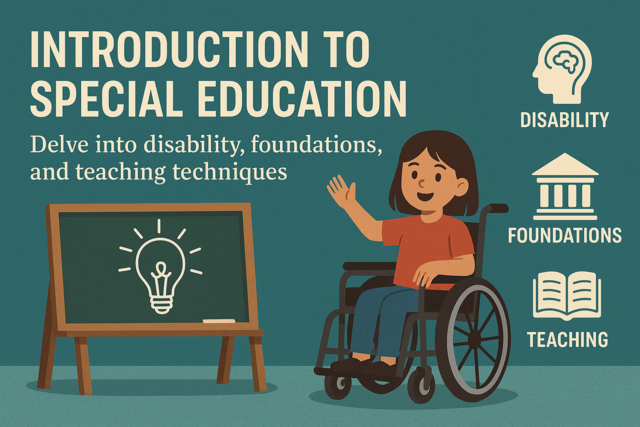Introduction
Vocabulary building is a natural process that is involved in learning any foreign language. When it comes to English, understanding various methods or techniques that are used to increase vocabulary will help a student to master the language. This article will help students find techniques that will help them build vocabulary usage, comprehension, and structure, which will not only increase reading comprehension, but the ability to communicate in a wide variety of scenarios.
Vocabulary Building Methods
There is no one right or wrong way to increase vocabulary. Students, as well as teachers, often find ways to enhance the learning experience on an individualized basis. Strategies for vocabulary development may include the use of word games, riddles, talking, and labels.
Students of English may develop word awareness using a combination of strategies and methods to help identify word parts and develop vocabulary, as well as strategies that help a student figure out new words or meaning from their context, and use them in a wide variety of documents.
Focusing on a Topic
Many students of English find that it helps to focus on a particular topic to increase vocabulary skills in a certain area. For example, it is impossible for students to access vocabulary in every area or field all at once. A student who is learning basic vocabulary needed for everyday life -- such as handling personal finances, shopping, or eating out -- may be overwhelmed by the vocabulary and usage of words in the medical industry, the legal field, or within consumer and business relationships.
Focusing on a specific topic or area will help to enhance the student's vocabulary building skills as well as comprehension. Start simple. For example, a student wishing to increase his or her vocabulary and reading comprehension in areas of social interaction might limit his or her attention to instruction that involves learning words that identify objects found around a home, neighborhood, and city. Such words may include furniture, fashion, and city structure, like streets, buildings, and directions.
After a student has mastered basic vocabulary in those areas, he or she may want to expand their horizons to include basic vocabulary necessary when visiting a doctor or a medical environment. Such words might include basic terminology for objects or equipment found inside a doctor or dentist's office, or in a hospital.
An interest in a particular topic, such as animals, birds, cars, or historical landmarks, is also a good starting place for students learning English as a Second Language (ESL) -- to build a vocabulary within their areas of interest. In addition to learning vocabulary in these areas, repeated exposure to frequent use of such vocabulary, as well as use of adjectives and adverbs, will help to improve general reading vocabularies and fluency.
Students may use this method to not only recognize root words, but also the addition of prefixes and suffixes that create new words to expand their vocabulary in every area. Dictionaries provide information about the various root words, and help in constructing word forms properly using prefixes and suffixes.
Word Awareness
Word awareness is a term used by many teachers to encourage students to learn new vocabulary. Such word awareness may involve the use of note or index cards or signs placed on familiar objects within a classroom, home, or business to constantly remind and encourage a student to attempt and understand new vocabulary.
Word awareness may also be encouraged through the use of games, such as Find-a-Word and crossword puzzles. They may also be encouraged through the use of dialogue or words introduced in short stories, riddles, and jokes.
Word awareness may be developed through a variety of strategies. The use of books, models, and immersion -- a focus on a specific scenario or topic -- increases the student's exposure to new words, as well as how they are used in a variety of scenarios. Immersion is a popular technique that is used in many foreign language classrooms to help students focus on vocabulary building and use in a detailed area such as Greetings, Grocery Shopping, Visits to the Doctor, as so on.
In many situations, a student exposed to a new document or reading material may find a highlighted list of new vocabulary words and definitions to go along with the reading selection. It is important for students to take the time to understand the definition and meaning of these words in order to gain a greater understanding of the reading materials. For example, a student taking a math class might find it difficult to succeed if he or she does not understand various terms used in algebra, geometry, or trigonometry, such as "circle," "diameter," "arc," and so on.
Generating new words through the use of vocabulary building using roots, prefixes, and suffixes will help students to apply their knowledge and develop strategies and methods that are best adapted to his or her own learning capabilities.
That said, there is one method that is perhaps the most favored and productive of all learning strategies, and that is dialogue, or talking. While a student may not understand everything that is being said, through the use of talking, a student may gain a greater understanding not only of pronunciation, but the way in which certain vocabulary words are used to create thoughts and ideas.
Wide exposure to words is a powerful word-learning tool. The use of such informal word learning techniques may help students feel more comfortable with making mistakes in usage or pronunciation in order to constantly improve their skills. The ability to hear and use language with other students, or through interactive environments, such as online or software language programs, is one of the best ways to encourage students to speak, as well as read a new language.
Students may also find it amusing to play various games that help them define and explain various aspects of the English language, such as the use of oxymorons, acronyms, and metaphors.
For example, students may not know these terms by definition, but they do recognize, and are often confused by, their use in the spoken and written language. For example:
- Oxymoron - a phrase composed of words that seem contradictory. For example, "jumbo shrimp," or "plastic silverware."
- Acronyms - a word formed through the construction of the initial or beginning letters of other words. For example, "SCUBA" � (self-contained underwater breathing apparatus).
- Metaphor - a figure of speech in which a word or phrase that ordinarily designates one thing is used to designate another. For example, saying, "You are my sunshine."
While the use of such structures in English often provokes confusion and dismay among those learning to read English, or those wishing to improve their reading skills, they are a part of the written and spoken language and should be understood, at least by their definition.
Students attempting to improve their reading skills should remember that even the most basic and elementary reading books appropriate for various age levels do not generally contain samples of everyday spoken English. Because of this, many students learning English are intimidated by the difference between regular usage of vocabulary in the spoken language and that found on paper.
However, students may be relieved to know the basic word vocabulary is the same in both the written and spoken language. While the presentation may be different, words don't generally change their meaning between the written and spoken word. This is the same in any language, and not just English. Students who have a solid foundation in vocabulary and vocabulary building skills will find that their journey toward comprehension and mastery of the English language is not so difficult.
Conclusion
Students engaged in individual or classroom instruction in the English language will find themselves developing content vocabulary according to themes or focus of topics. Repetition and use of already learned words helps to implant them firmly in the mind and increase the ability to learn new words for new concepts. Whether a student is learning text- or theme-focused vocabulary, understanding and memorizing basic word lists is one of the foundations of increasing reading comprehension and levels.
Learning independent strategies to understand word parts, as well as figuring out new words from context found in newspapers, documents, or common casual letters is up to each individual student. What works for some will not work for others. However, developing vocabulary skills in a wide range of scenarios and topic interests will help increase the ability of any student to be comfortable within various work fields and environments.
Many people don't stop to think how important the ability to read or communicate in the workplace can be. However, if you're an employer, you know that you and your business will benefit if your employees know how to read and write and count. Such skills are necessary in work and quality performance anywhere.
Different work environments will require different skills and vocabulary levels. Employees who work in health care or hospitals, doctor's or dentist's offices know their writing and reading skills help in the preparation of patient documents and improve documentation of care.
Those who work in government positions are aware of the massive amounts of paperwork that must be filled out, checked for accuracy, and filed for record management or to address the needs of various individuals from all economic and cultural backgrounds.
Nearly every workplace needs some sort of filing or bookkeeping system in order to operate smoothly and efficiently. Those who understand differences in forms, reports, and bookkeeping needs will be able to offer their expertise to enhance their jobs, their job descriptions, and their capability in dealing with a wide range of scenarios and situations.
Reading in the workplace is directly related to:
� Improved communication skills
� The ability to solve problems
� The ability to cope with changes
� The ability to learn and use new technology
Communication skills ensure that employees are self-confident and knowledgeable about their job descriptions and ability to perform to the best of their ability. Communication between the employees and managers is essential in many fields. Communication skills and the ability to read well enhance an employee's ability to solve problems and offer solutions and ideas both to peers and management.
Written and verbal communication ensures that directions are understood and will be able to be followed. This communication enhances the work environment, and reduces misunderstandings between customers and service providers in a broad range of fields and industries.
Employees who are able to read and communicate are able to solve problems in performance and quality. Problem-solving skills are greatly improved and enhanced when employees are able to understand the rules, regulations, and fine print that is found on nearly every legal or governmental document ever created.
When employees understand English, they are able to take on more responsibility and solve problems on their own. Understanding how to find and resolve issues or errors in production management, medical practices, or government work improves relationships and allows for smoother work processes.
Employees must be able to read documents that have to do with health insurance, medical coverage, regulations, job descriptions, and financial documents -- not only to protect themselves, but also to take charge of their own care and daily living necessities. Employees are vital to most workplace environments, and as such, have a responsibility not only to themselves, but also to their employers to provide adequate and knowledgeable services.
Employees in all fields are constantly barraged with new technology, software, and equipment in their career fields. Jobs are becoming computerized across-the-board, and the faster employees learn to understand and use these new technologies, the more comfortable and in control they will feel.
The necessity of employees from all walks of life to be able to read and understand English in the American workplace is vital for success and advancement. Electronics, health care, construction, and automotive industries rely on their employees being able to read manuals, diagrams, work orders, and other types of documents and materials in the course of their daily work.
It seems like everywhere we turn around these days there is some sort of a form to be filled out. Whether that form is for a Social Security number, a driver's license, medical insurance benefits, or a request for information, English students need to understand the different terminology that is involved in these forms.
Government forms are notorious for being long and complicated. Some applications for Medicare services may be more than 30 pages in length, while medical claim forms may require a multitude of supporting documents and papers for proper completion. If an individual does not understand the requirements that are involved with submitting any type of application, it may be denied or delayed.
As an example, this section includes an application for a driver's license in the state of New York, as well as an application for a Social Security card from the Social Security Administration. We will also include an example of a health benefits program election form for federal employee health benefits, so that students may become familiar with the different types of terminology and the necessity for reading the fine print in a variety of such forms or applications.
Social Security Card Application
As you can see, the need for an understanding of vocabulary within a wide range of workplace environments is essential not only for employment, but for success and adequate work benefits. Whether you are going to a restaurant and need to read the menu, or you need to seek the advice of a lawyer, a banker, or a doctor, chances are you will be faced with some type of form and will need to read it, fill it out properly, and well as follow any directions or instructions contained within it.






















